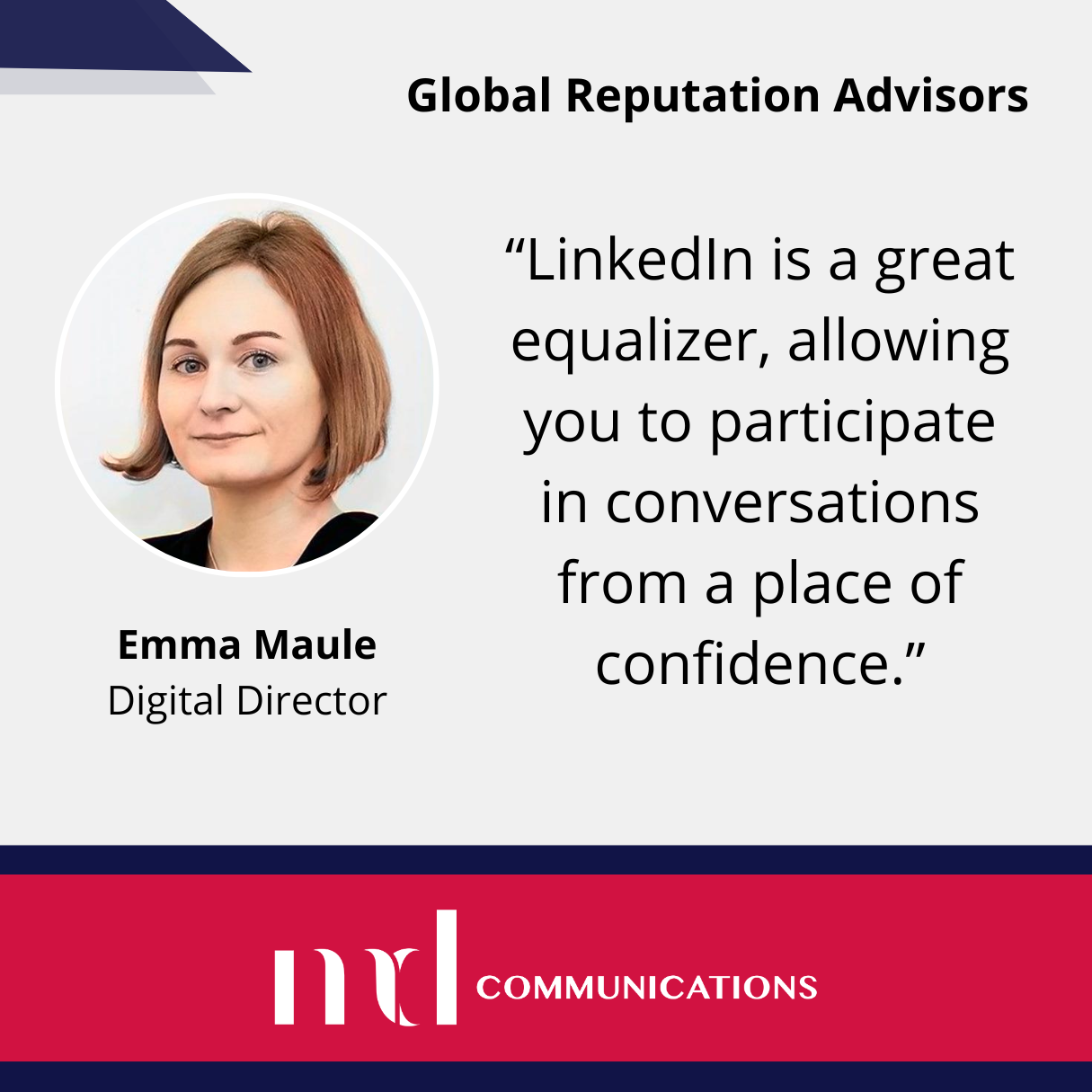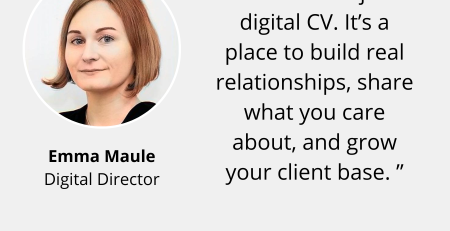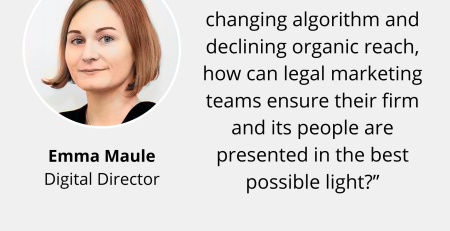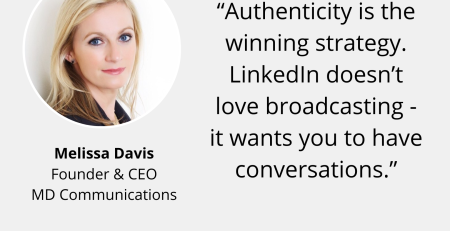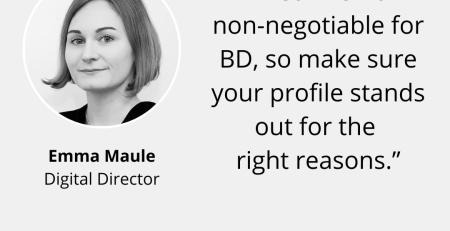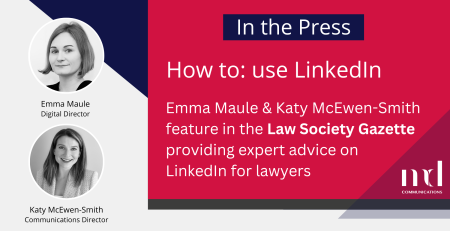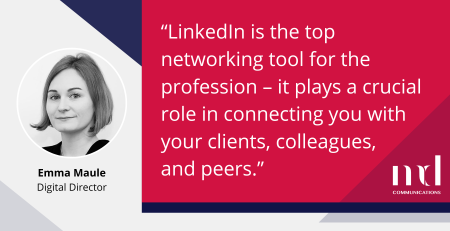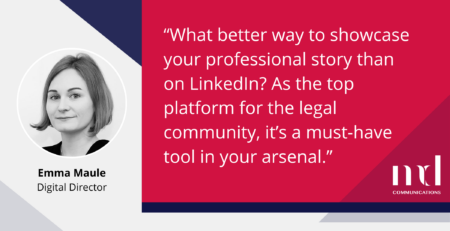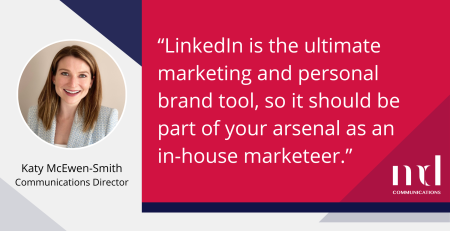Our Digital Director Emma Maule reports from the massive 500-person social media webinar run by the IBA over the summer
What are potential clients more likely to visit, your firm’s website or your LinkedIn profile?
Opening the IBA social media webinar, moderator Deborah Brightman Farone, described as a legal marketing giant, got us thinking about this pertinent question. Of course, the answer is LinkedIn.
Featuring Lewis Grimm, Partner at Jones Day, dialling in from Australia; Nancy Myrland, a marketing consultant; and Gary Assim, Head of International Relations at Shoosmiths, with an audience of around 500 people, this was clearly a popular topic.
In an era where a person’s digital reputation is as important as their professional one, lawyers must master the art of personal branding on social media. LinkedIn, in particular, has become the go-to platform for potential clients, who often visit a lawyer’s profile before their firm’s website.
The power of presence
First impressions are everything. With people forming an opinion in as little as 1/10th of a second, your LinkedIn profile must immediately convey your expertise and personality. The goal is to make people feel they know you before you’ve even met, transforming every introduction from a cold call into a warm conversation.
Consistency is more valuable than perfection. Don’t wait for a perfect moment to post a masterpiece; instead, use small, “in-between moments” throughout your day to engage. Even a 60-second action, such as a quick comment or share, can significantly build your digital presence.
A simple but effective tip for starting your LinkedIn journey is to begin by engaging with existing content. Share your firm’s posts or comment on industry news. This low-pressure approach allows you to get comfortable with the platform and gradually build your confidence before creating your own content.
Content strategy for lawyers
The most effective content is often personal and human. While thought leadership is important, polls (including those during the webinar itself) show that personal insights and stories resonate more with an audience. The key is to avoid overly niche or esoteric topics that might alienate your audience.
- Ask “so what?” Before posting, ask yourself: “Who cares about this?” and “What is the so what?” This helps ensure your content is relevant and provides value.
- Tell a story: Use storytelling as a “Trojan horse” to convey complex legal ideas in a more engaging way. Simple analogies and real-world examples can make even the most technical concepts digestible.
- Embrace your personality: Authenticity is your greatest asset, especially in an age of AI. Your voice and unique perspective are what will truly differentiate you. Be yourself, and your audience will respond.
Remember that a successful post is one that drives an action, whether that’s an inquiry from a new client or a conversation with an existing one. Think of your efforts as cumulative marketing; not every post will lead to a new case, but every post contributes to building your brand and reputation over time.
Firm support and ethical considerations
Many lawyers are still skeptical about using social media, feeling overwhelmed by the process. BD and marketing teams can simplify this by capturing a lawyer’s “brilliance in the wild” – for example, by listening to a presentation they give and turning the key takeaways into a blog post or carousel. This shows lawyers how easy it can be and encourages them to take ownership of their content.
However, with great digital presence comes great responsibility. When engaging online, always be mindful of legal ethics and compliance. A simple rule of thumb is to ask yourself, “What if this post was published on the front page of a newspaper?” This helps ensure that your content is always professional and doesn’t compromise client confidentiality or your firm’s reputation.
Be aware that popular posts can attract negative feedback. You must have a thick skin and be prepared for potential criticism. If a conversation becomes too sensitive, move it offline to email or a private message.
Advice for lawyers new to LinkedIn
- If you haven’t used LinkedIn before, start slowly then grow your presence. Start by sharing firm posts and commenting.
- People will look at your LinkedIn profile so think about how it’s drafted. Give people more of an idea of who you are – get the right tone.
- There are two aspects – profile and presence. Start with your profile – get it to meaningful and robust before putting yourself out there. Have a process and practice posting. Don’t be so hard on yourself – people won’t judge you for one wrong word.
And if you’re feeling a bit shy or are an introvert? The answer is to think of LinkedIn in three ways: One, as a tool to connect with people. Two, instead of posting, comment on posts. Three, concentrate on your profile.
Just remember, LinkedIn is a great equalizer, allowing you to participate in conversations from a place of confidence.
Thank you to the IBA and the fantastic panel for an insightful session!


